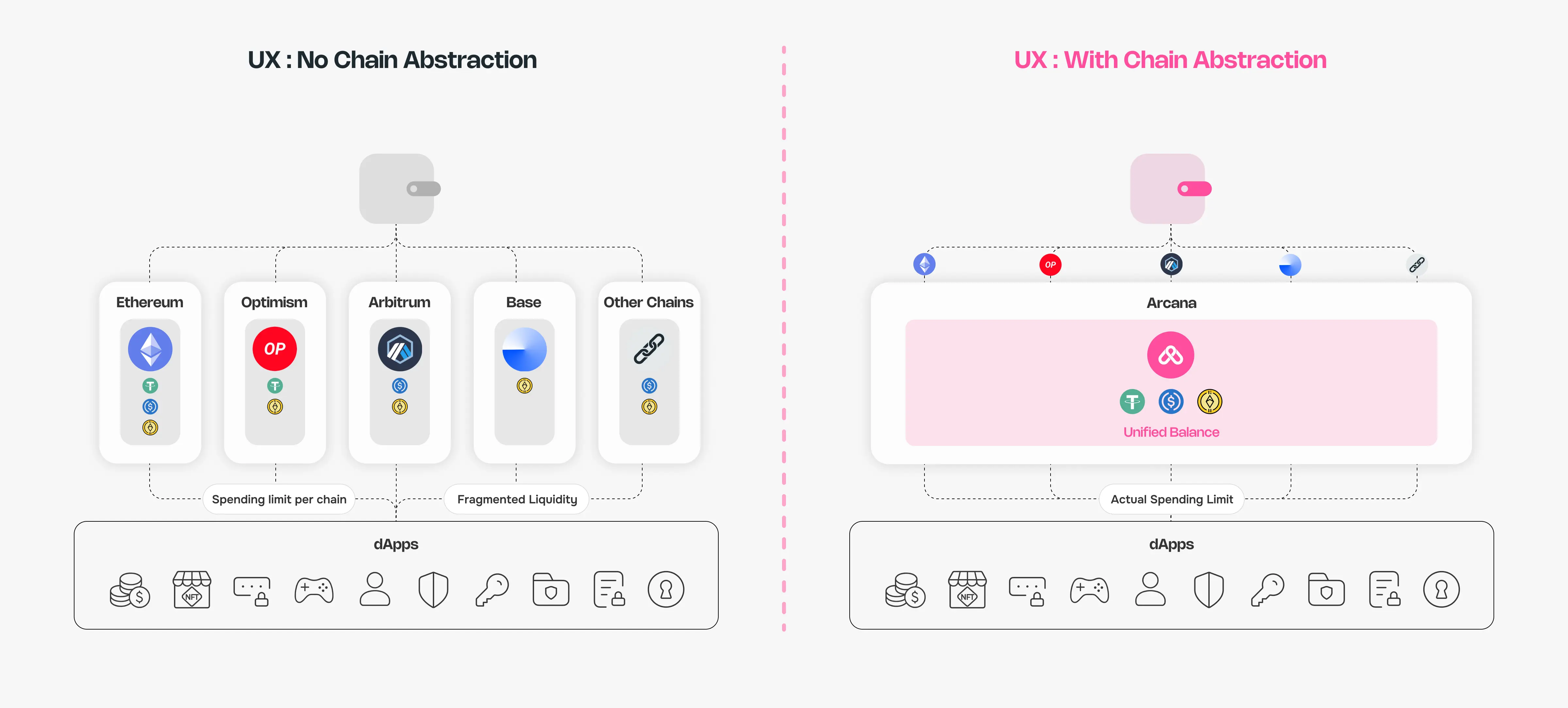Chain Abstraction
Estimated time to read: 2 minutes
Managing multiple chains, tokens, and accounts fragments wallet liquidity for Web3 users. Even with enough assets overall, funds scattered across chains make transacting difficult and require complex, time-consuming conversions.
Chain abstraction lets users access a unified balance across all wallet-linked chains, enabling transactions anywhere. Instead of converting funds first, users specify a clear intent. The protocol collects funds from source chains, shows intent and fees for confirmation, then publishes the intent to solvers. Solvers compete to provide liquidity on the destination chain, and once available, users confirm the transaction. Settlement with solvers happens asynchronously using the collected funds.
As part of setup, devs configure allowances per chain and token. Users approve or reject these allowances. For supported chains and tokens, the protocol uses these allowances to deposit required funds for transactions on the destination chain.

Why Chain Abstraction?
Chain abstraction enables unified balance to simplify and streamline Web3 transactions. It offers:
- Faster Intent Processing: Enables quick and seamless transaction execution across chains.
- Unified Liquidity: Provides a consolidated view of user assets across wallet-linked chains with no asset bridging.
- Simplified UX: Removes multi-step hurdles for a seamless experience for users.
- Streamlined DX: Developers can add unified balances to dApps with minimal changes and no smart contract updates for new chains.
Cross-Chain Chain Abstraction (CCA)
Chain abstraction lets users spend a single token type (like USDT) across source chains using a unified balance. They can then use that balance on any destination chain—still as USDT.
Cross-chain Chain Abstraction (CCA) takes it further. Users can now combine multiple token types (like USDT, USDC) into one unified balance across chains—and spend it as any supported token (USDT, USDC, etc.) on any destination chain.
The cross-chain chain abstraction is atomic in nature. It involves multiple source chains and token types and batches transactions. If any one sub-transaction fails, the entire cross-chain transaction fails.
Cross-chain CA transactions do not have any overheads as compared to the basic chain abstracted transactions. These may be marginally faster than the basic chain abstracted transactions (single token type).
Pectra Support
By default, Cross-Chain Abstraction (CCA) kicks in automatically for transactions between source chains that support Pectra.
If any source chain doesn’t support Pectra, the SDK falls back to basic chain abstraction. This means users can use unified token balance to spend only a single unified token type from the source chains.
The SDK smartly picks between CCA and base chain abstraction based on the source chains in the transaction and their Pectra support. No extra setup is needed by Web3 apps or users.
About Refunds
If a cross-chain CA transaction fails, the user gets a refund equal to the total deposits collected from their EOA across all source chains.
Even if the deposits involved multiple token types, the refund is always in USDC.